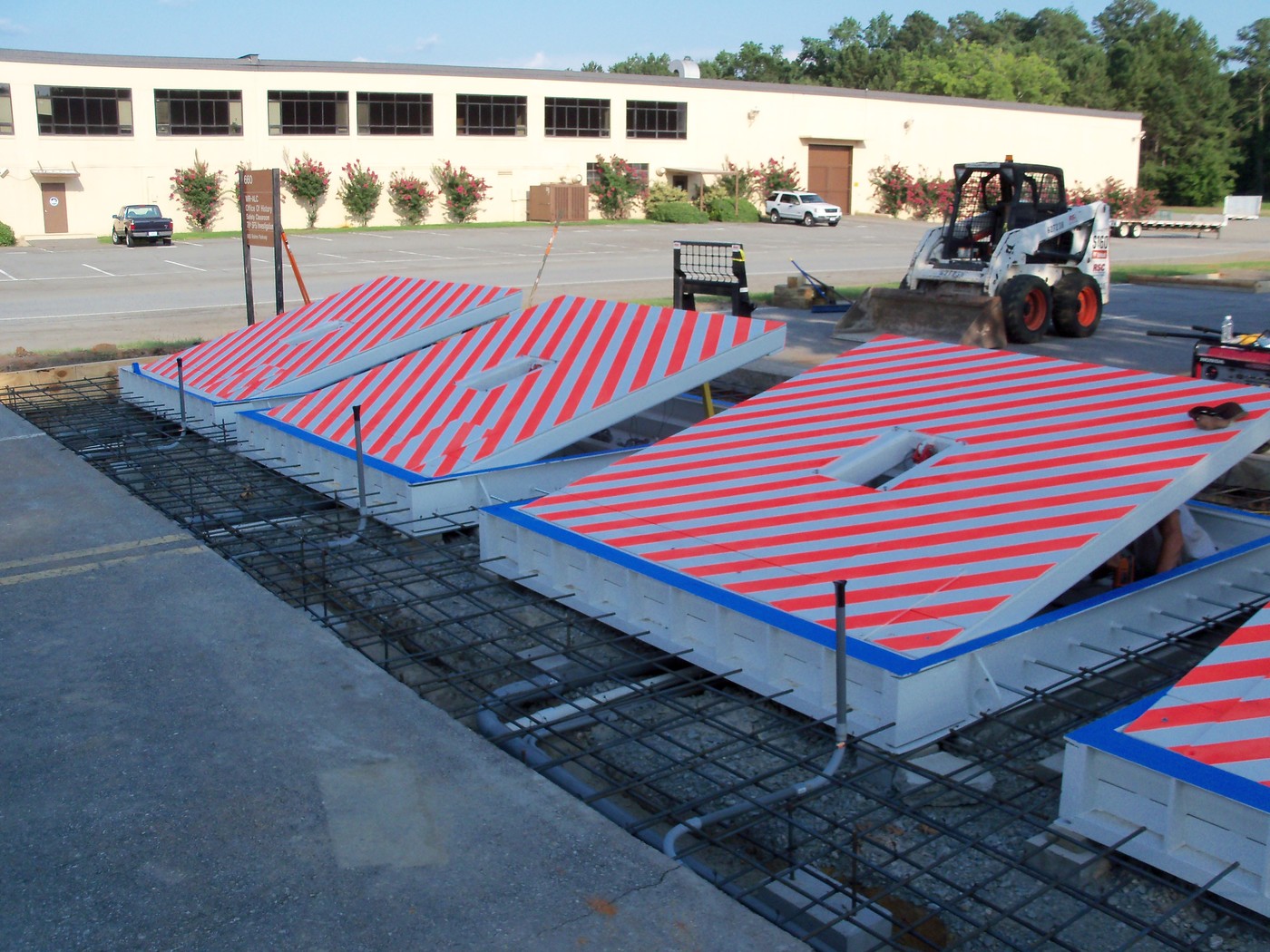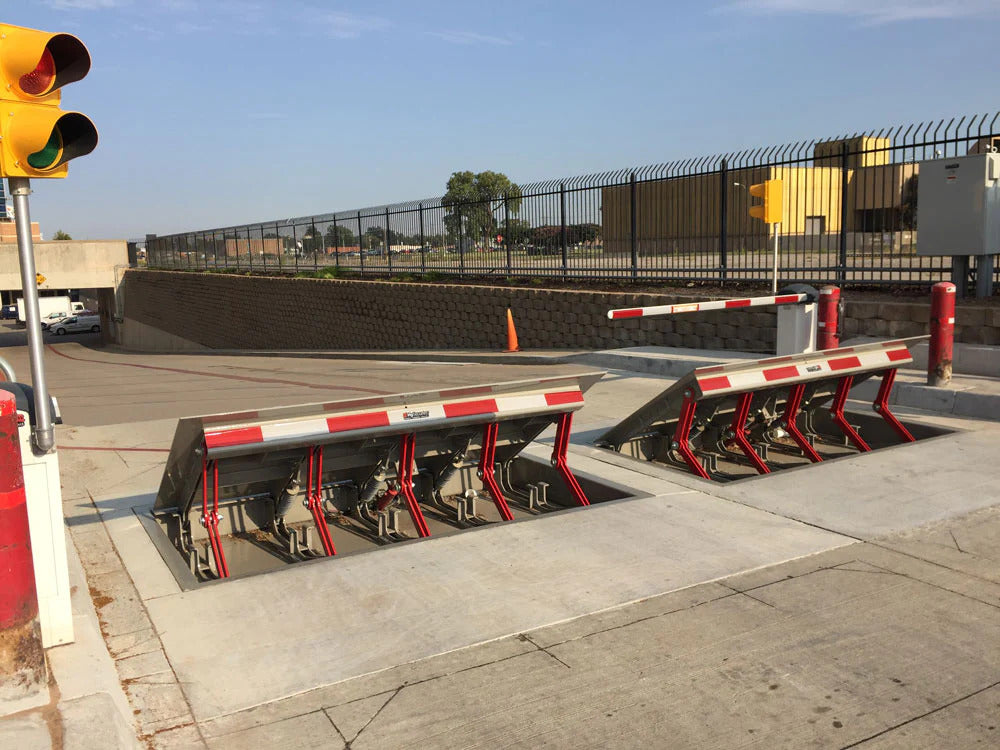Facts About Wedge Barriers Revealed
Not known Facts About Wedge Barriers
Table of ContentsAll about Wedge BarriersThe Buzz on Wedge Barriers

Wedge Barriers for Dummies
The staying force used to
the cam to deploy the wedge plate 16 may be provided by an electromechanical actuator 84 or other actuator. The spring assembly 54 and the actuator 84(e. Wedge Barriers. g., electromechanical actuator)may operate with each other to translate the cam and lift the wedge plate 16.
As mentioned above, the spring assembly 54 puts in a consistent force on the camera, while the electromechanical actuator might be controlled to exert a variable force on the camera, therefore allowing the training and decreasing( i. e., deploying and pulling back )of the wedge plate 16. In particular embodiments, the constant force applied by the spring assembly 54 may be flexible. g., electromechanical actuator) is handicapped. As will be appreciated, the springtime assembly 54 may be covered and protected from debris or other aspects by a cover plate(e. g., cover plate 68 received FIG. 4) that may be considerably flush with the raised surface area 38 of the structure 14. As mentioned over, in the released position, the wedge plate 16 serves to obstruct accessibility or travel beyond the barrier 10. For instance, the barrier 10(e. g., the wedge plate 16 )may block pedestrians or vehicles from accessing a building or path. As discussed over, the obstacle 10 is affixed to the support 30 protected within the foundation 14,

front braces 71. Therefore, the linkage assemblies 72 might pivot and rotate to allow the collapse and extension of the affiliation assemblies 72 during retraction and implementation of the bather 10. The affiliation settings up 72 reason movement of the wedge plate 16 to be restricted. For instance, websites if an automobile is traveling in the direction of the released wedge plate 16(e. As an example, in one scenario, the safety and security legs 86 might be expanded throughoutupkeep of the obstacle 10. When the safety legs 86 are released, the security legs 86 support the weight of the wedge plate 16 versus the surface 12. Because of this, the lifting device 50 might be shut off, serviced, gotten rid of, changed, etc. FIG. 5 is partial viewpoint view of a personification of the surface-mounted wedge-style barrier 10, illustrating the cam 80 and the camera surfaces 82 of the training system 50. Especially, two webcam surfaces 82, which are described as reduced webcam surfaces 83, are this page placed listed below the web cam 80. The lower cam surfaces 83 might be fixed to the surface area 12 (e. For instance, the lower webcam surface areas 83 and the mounting plate 85 may create a solitary item that is protected to the anchor 30 by screws or various other mechanical fasteners. Additionally, two web cam surface areas 82, which are referred to as upper cam surface areas 87, are positioned over the camera 80 and combined to (e. In other personifications, interfering layers or plates might be placed between the surface 12 and the reduced webcam surfaces 83 and/or the wedge plate 16 and the top published here cam surface areas 87 As pointed out above, the web cam
80 equates along the cam surface areas 82 when the wedge plate 16 is lifted from the withdrawed setting to the deployed setting. Additionally, as stated above, the spring setting up 54 (see FIG. 3 )may supply a pressure acting on the camera 80 in the instructions 102 using spring pole 58, which may reduce the force the electromechanical actuator 84 is called for to put on the web cam 80 in order to actuate and raise the wedge plate 16. 1 )to the released position(see FIG. 4). As revealed, the cam 80 includes track wheels 104(e. g., rollers), which get in touch with and translate along the camera surface areas 82 during procedure.